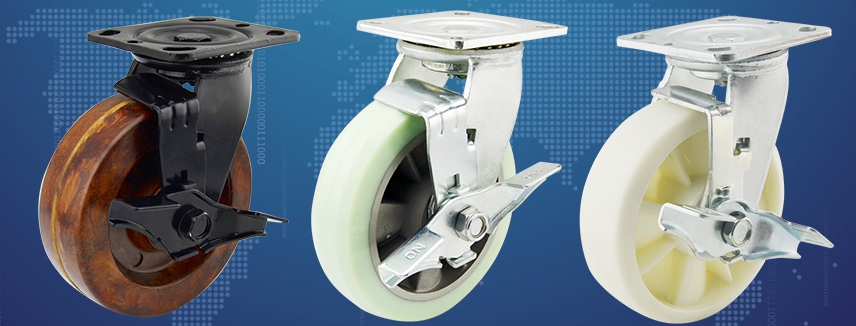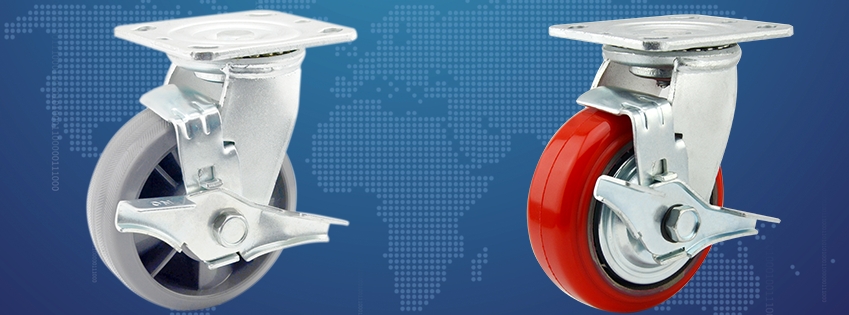In industrial equipment, logistics transportation and warehouse management, casters, as the core components of mobile devices, are of no small significance. However, many users often only focus on the load-bearing capacity of the casters when making a selection, but overlook other crucial factors. In fact, the selection of casters involves multiple dimensions such as material, installation method, and usage environment. This article will provide you with a comprehensive analysis of the application scenarios and selection techniques of industrial casters, helping you better understand this seemingly simple yet crucial component.

I. Core Functions and Application Scenarios of Casters
The casters are not merely the "mobile assistants" of the equipment; they also perform various functions such as shock absorption, noise reduction, and corrosion resistance. For instance, in the automotive manufacturing workshop, heavy-duty casters need to withstand excessive loads and possess excellent shock absorption capabilities to minimize the impact on precision parts during equipment movement. In the food processing industry, casters need to have corrosion resistance and easy cleanliness to adapt to the humid and highly hygienic environment.
II. Five Key Factors for Wheel Selection
Load-bearing capacity: This is the most fundamental selection criterion. Based on the total weight of the equipment and the number of casters, calculate the load for each caster, and leave a certain safety margin.
2. Wheel Material: Different materials of casters are suitable for various scenarios. For instance, polyurethane wheels are suitable for high-maintenance environments, while rubber foam wheels are more suitable for situations that require shock absorption and quiet operation.
3. Installation method: Various installation methods such as flat type, bolt type, and top-of-hole type are available. The choice should be made based on the equipment structure and usage requirements.
4. Operating Environment: High temperatures, low temperatures, humidity, corrosive environments, etc., all can affect the performance and lifespan of the casters. For instance, heat-resistant casters are commonly used in baking equipment and car drying sheds.
Special features: Such as braking function, silent design, and shock absorption performance, are all factors that need to be taken into consideration during the selection process.
III. Innovation of Casters and Future Trends
With the advancement of Industry 4.0, the wheel industry is also constantly innovating. For instance, intelligent wheels, equipped with sensors and IoT technology, can monitor the movement status and load conditions of equipment in real time, providing data support for equipment management. Moreover, the application of environmentally friendly materials has become a trend in the industry, such as recyclable polyurethane materials and low-pollution galvanizing processes.

Although the wheels are small, they play an irreplaceable role in industrial production and logistics transportation. Choosing the right wheels can not only improve equipment efficiency but also reduce maintenance costs and extend equipment lifespan. If you are struggling with wheel selection, consider comprehensively considering multiple dimensions such as load-bearing capacity, material, and environment, or consult professional manufacturers like Da Shi Wheel, who can tailor the most suitable solution for you. Let each wheel become an "efficient assistant" for the smooth operation of the equipment!
This article is copyrighted by Dashi Cheelun.



